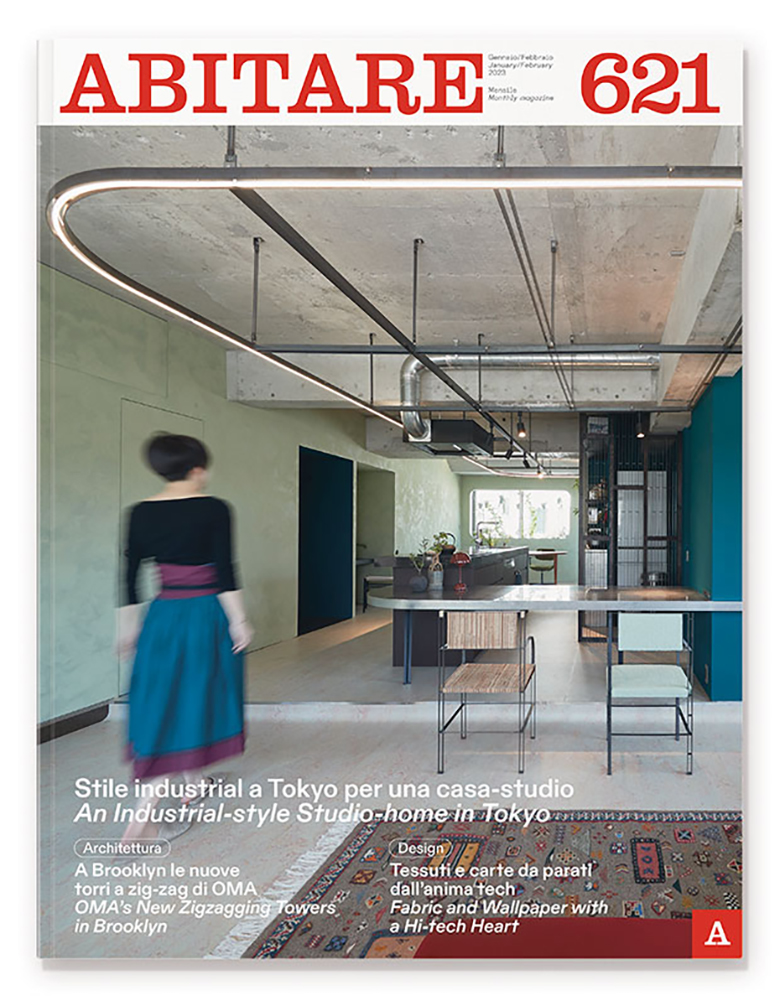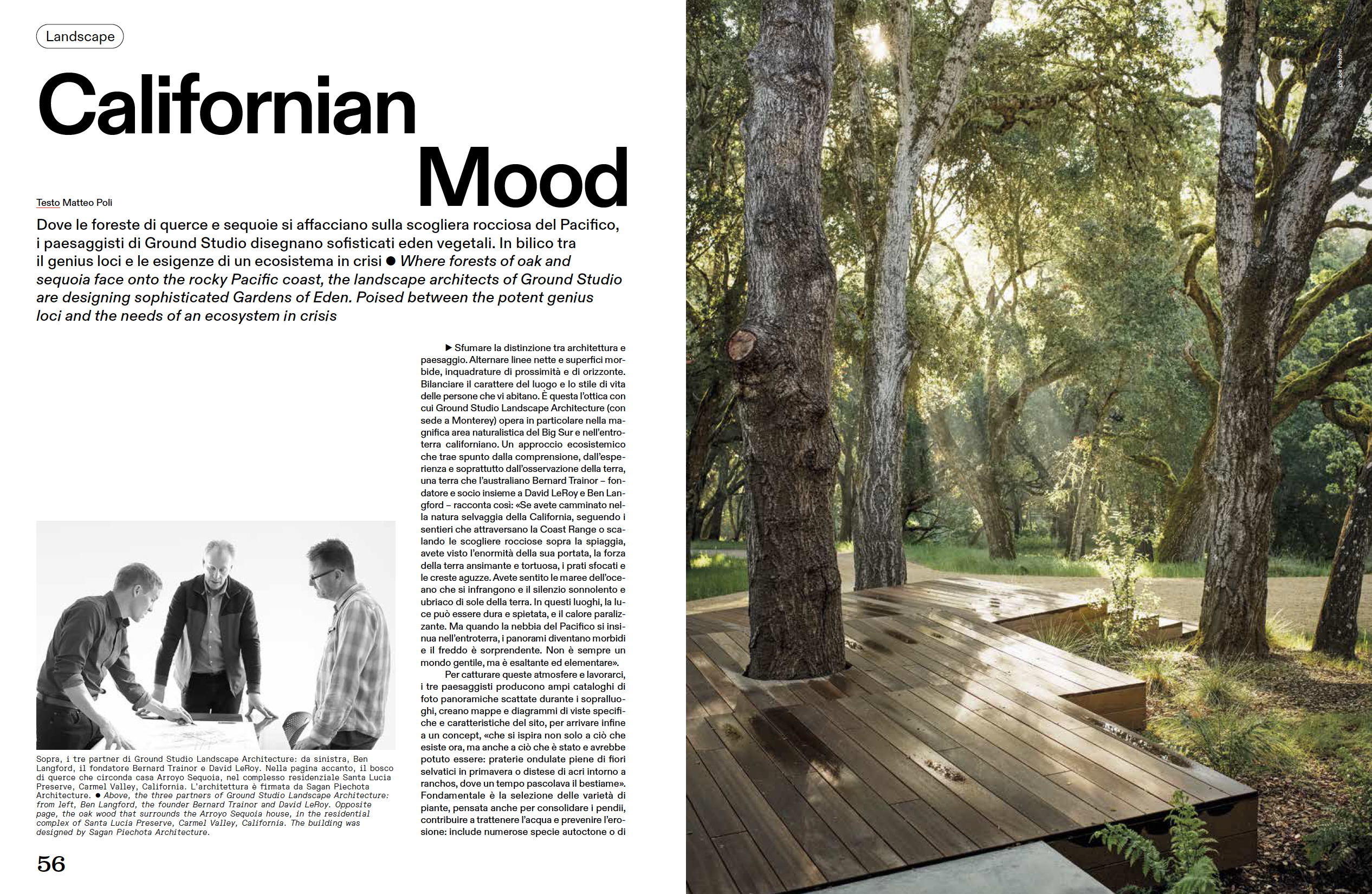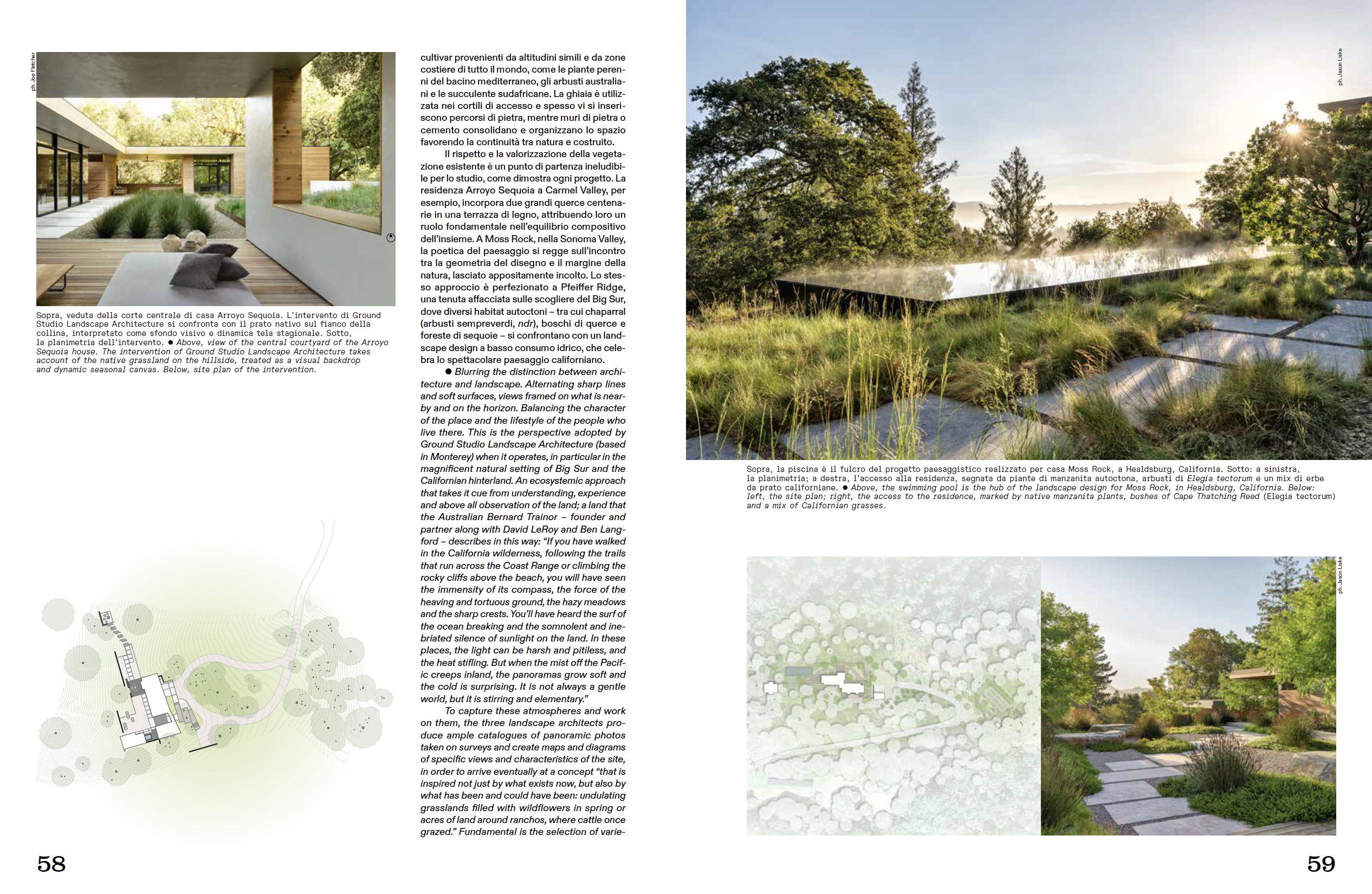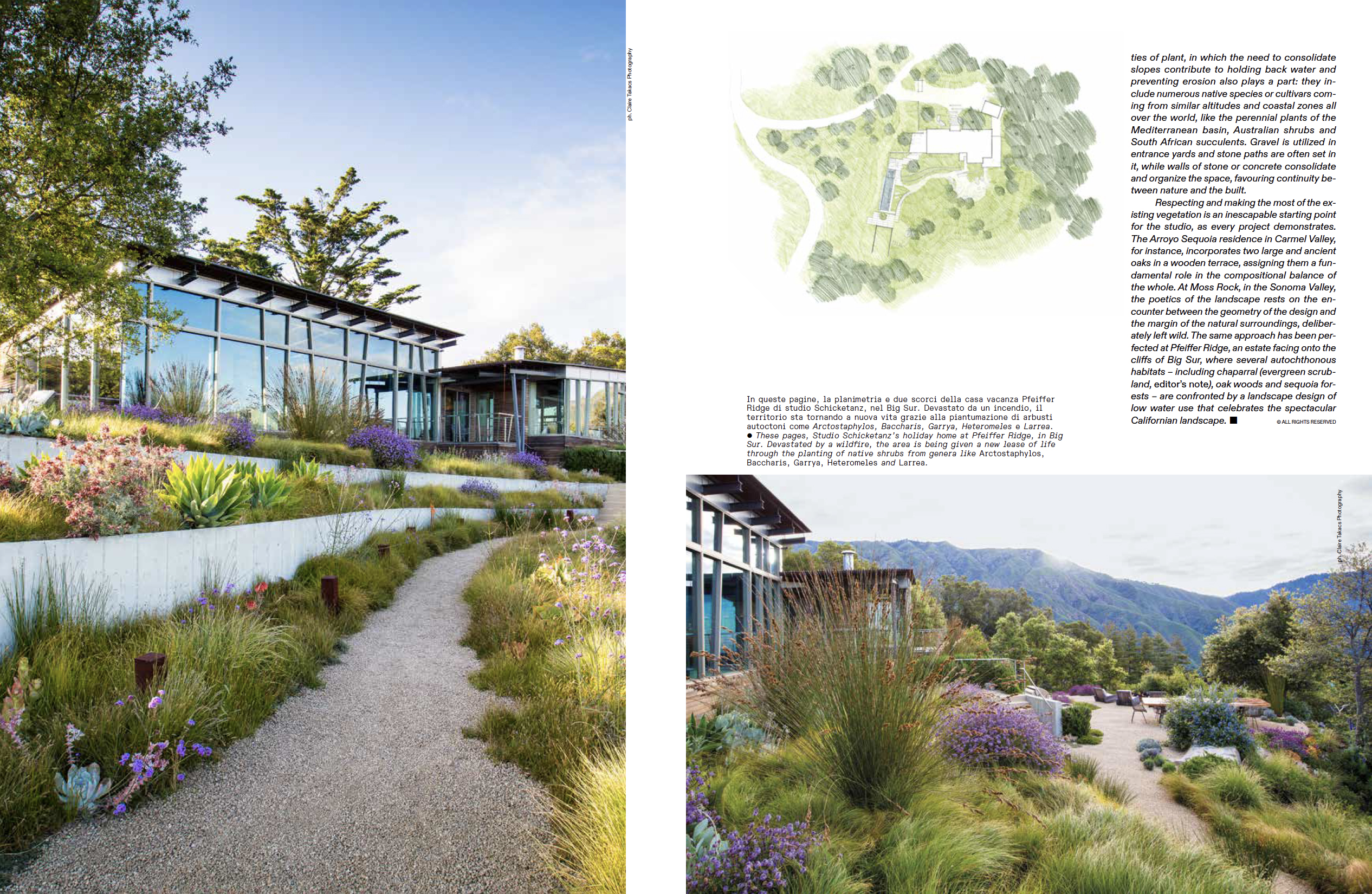Dove le foreste di querce e sequoie si affacciano sulla scogliera rocciosa del Pacifico, i paesaggisti di Ground Studio disegnano sofisticati eden vegetali. In bilico tra il genius loci e le esigenze di un ecosistema in crisi
Sfumare la distinzione tra architettura e paesaggio. Alternare linee nette e superfici morbide, inquadrature di prossimità e di orizzonte. Bilanciare il carattere del luogo e lo stile di vita delle persone che vi abitano. È questa l’ottica con cui Ground Studio Landscape Architecture (con sede a Monterey) opera in particolare nella magnifica area naturalistica del Big Sur e nell’entroterra californiano. Un approccio ecosistemico che trae spunto dalla comprensione, dall’esperienza e soprattutto dall’osservazione della terra, una terra che l’australiano Bernard Trainor – fondatore e socio insieme a David LeRoy e Ben Langford – racconta così: «Se avete camminato nella natura selvaggia della California, seguendo I sentieri che attraversano la Coast Range o scalando le scogliere rocciose sopra la spiaggia, avete visto l’enormità della sua portata, la forza della terra ansimante e tortuosa, i prati sfocati e le creste aguzze. Avete sentito le maree dell’oceano che si infrangono e il silenzio sonnolento e ubriaco di sole della terra. In questi luoghi, la luce può essere dura e spietata, e il calore paralizzante. Ma quando la nebbia del Pacifico si insinua nell’entroterra, i panorami diventano morbidi e il freddo è sorprendente. Non è sempre un mondo gentile, ma è esaltante ed elementare».
Per catturare queste atmosfere e lavorarci, i tre paesaggisti producono ampi cataloghi di foto panoramiche scattate durante i sopralluoghi, creano mappe e diagrammi di viste specifiche e caratteristiche del sito, per arrivare infine a un concept, «che si ispira non solo a ciò che esiste ora, ma anche a ciò che è stato e avrebbe potuto essere: praterie ondulate piene di Fiori selvatici in primavera o distese di acri intorno a ranchos, dove un tempo pascolava il bestiame». Fondamentale è la selezione delle varietà di piante, pensata anche per consolidare i pendii, contribuire a trattenere l’acqua e prevenire l’erosione: include numerose specie autoctone o di cultivar provenienti da altitudini simili e da zone costiere di tutto il mondo, come le piante perenni del bacino mediterraneo, gli arbusti australiani e le succulente sudafricane. La ghiaia è utilizzata nei cortili di accesso e spesso vi si inseriscono percorsi di pietra, mentre muri di pietra o cemento consolidano e organizzano lo spazio favorendo la continuità tra natura e costruito.
Il rispetto e la valorizzazione della vegetazione esistente è un punto di partenza ineludibile per lo studio, come dimostra ogni progetto. La residenza Arroyo Sequoia a Carmel Valley, per esempio, incorpora due grandi querce centenarie in una terrazza di legno, attribuendo loro un ruolo fondamentale nell’equilibrio compositivo dell’insieme. A Moss Rock, nella Sonoma Valley, la poetica del paesaggio si regge sull’incontro tra la geometria del disegno e il margine della natura, lasciato appositamente incolto. Lo stesso approccio è perfezionato a Pfeiffer Ridge, una tenuta affacciata sulle scogliere del Big Sur, dove diversi habitat autoctoni – tra cui chaparral (arbusti sempreverdi, ndr), boschi di querce e foreste di sequoie – si confrontano con un landscape design a basso consumo idrico, che celebra lo spettacolare paesaggio californiano.
–
Where forests of oak and sequoia face onto the rocky Pacific coast, the landscape architects of Ground Studio are designing sophisticated Gardens of Eden. Poised between the potent genius loci and the needs of an ecosystem in crisis
Blurring the distinction between architecture and landscape. Alternating sharp lines and soft surfaces, views framed on what is nearby and on the horizon. Balancing the character of the place and the lifestyle of the people who live there. This is the perspective adopted by Ground Studio Landscape Architecture (based in Monterey) when it operates, in particular in the magnificent natural setting of Big Sur and the Californian hinterland. An ecosystemic approach that takes it cue from understanding, experience and above all observation of the land; a land that the Australian Bernard Trainor – founder and partner along with David LeRoy and Ben Langford – describes in this way: “If you have walked in the California wilderness, following the trails that run across the Coast Range or climbing the rocky cliffs above the beach, you will have seen the immensity of its compass, the force of the heaving and tortuous ground, the hazy meadows and the sharp crests. You’ll have heard the surf of the ocean breaking and the somnolent and inebriated silence of sunlight on the land. In these places, the light can be harsh and pitiless, and the heat stifling. But when the mist off the Pacific creeps inland, the panoramas grow soft and the cold is surprising. It is not always a gentle world, but it is stirring and elementary.”
To capture these atmospheres and work on them, the three landscape architects produce ample catalogues of panoramic photos taken on surveys and create maps and diagrams of specific views and characteristics of the site, in order to arrive eventually at a concept “that is inspired not just by what exists now, but also by what has been and could have been: undulating grasslands filled with wildflowers in spring or acres of land around ranchos, where cattle once grazed.” Fundamental is the selection of varieties of plant, in which the need to consolidate slopes contribute to holding back water and preventing erosion also plays a part: they include numerous native species or cultivars coming from similar altitudes and coastal zones all over the world, like the perennial plants of the Mediterranean basin, Australian shrubs and South African succulents. Gravel is utilized in entrance yards and stone paths are often set in it, while walls of stone or concrete consolidate and organize the space, favouring continuity between nature and the built.
Respecting and making the most of the existing vegetation is an inescapable starting point for the studio, as every project demonstrates. The Arroyo Sequoia residence in Carmel Valley, for instance, incorporates two large and ancient oaks in a wooden terrace, assigning them a fundamental role in the compositional balance of the whole. At Moss Rock, in the Sonoma Valley, the poetics of the landscape rests on the encounter between the geometry of the design and the margin of the natural surroundings, deliberately left wild. The same approach has been perfected at Pfeiffer Ridge, an estate facing onto the cliffs of Big Sur, where several autochthonous habitats – including chaparral (evergreen scrubland, editor’s note), oak woods and sequoia forests – are confronted by a landscape design of low water use that celebrates the spectacular Californian landscape.




